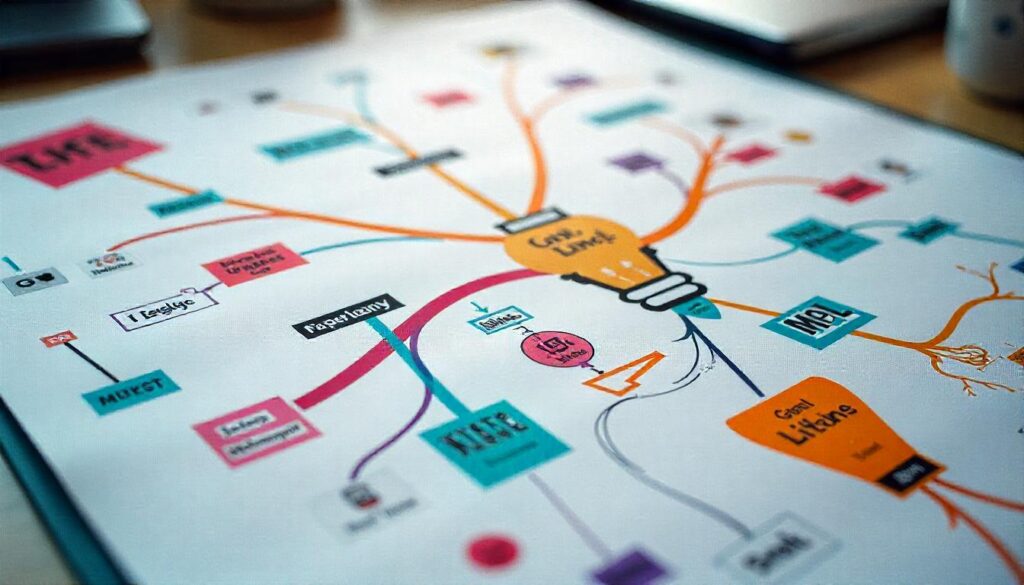
INTRODUCTION: Why You’re Struggling (and How to Fix It)
Be honest — have you ever read a chapter for hours and still couldn’t remember a single line the next day? Or promised yourself you’d study, but ended up scrolling social media for 2 hours straight?
You’re not lazy. You’re not broken.
You’re just studying the wrong way.
In 2025, success in academics doesn’t come to those who study the longest — it goes to those who study the smartest. This blog is your ultimate weapon: a collection of real, science-backed, student-tested study hacks that have changed the game for thousands.
If you’re ready to ditch boring routines and finally study like a pro, let’s dive in.

1. The Pomodoro Technique (But Done Right)
Most people know about Pomodoro – study for 25 minutes, break for 5. But very few use it right.
✅ Here's the exact method:
Choose one subject/task.
Set a timer for 25 minutes.
Work with full focus — no checking phone, no distractions.
When the timer rings, take a 5-minute break.
Repeat this cycle 4 times, then take a 25-minute long break
🔥 BONUS TIPS:
Use the Forest App – every 25 minutes of focus grows a virtual tree. Stop focusing? Your tree dies.
Use this method especially when you’re procrastinating — it tricks the brain into starting small.
🧪 Scientific Backing: Pomodoro reduces mental fatigue and improves productivity by 40% according to the University of Illinois.

2. Active Recall + Spaced Repetition = Brain Superpowers
❌ The Problem:
Most students do passive learning — reading, highlighting, underlining. But research shows we forget 70% of that within 24 hours.
✅ The Fix:
Active Recall is the art of pulling information out of your brain, not just feeding it in.
How to Use It:
After reading, close the book and write everything you remember.
Quiz yourself using flashcards (tools: Anki, Quizlet, Notion).
Use Spaced Repetition — revise at spaced intervals: Day 1, Day 3, Day 7, Day 14…
🧠 Toppers’ Secret: This is how NEET, JEE, and UPSC toppers revise — not by reading 10 times, but recalling 3 times strategically.

3. Mind Mapping – Visualize, Don’t Memorize
What is Mind Mapping?
It’s turning boring paragraphs into a visual web of keywords, arrows, and diagrams — the way our brain thinks.
How to Do It:
Start with a central idea (e.g., “Photosynthesis”).
Branch out with key points like “Light Reaction”, “Dark Reaction”.
Add colors, symbols, and arrows to connect concepts.
🖼️ Tools: XMind (free), MindMeister, or even a whiteboard.
✅ Why It Works: Mind Maps create visual memory hooks — so during exams, you’ll literally “see” your notes.

4. The Digital Detox Hour – Master Your Mind
Phones are the #1 focus killer. One WhatsApp ping and boom — 30 minutes gone.
The Rule:
Before you study, switch your phone to Airplane Mode or use apps like Stay Focused, Cold Turkey.
Lock it in another room if you must.
🧠 Pro Hack: Use the “Phone Jail” method: put your phone in a drawer and set a timer. You can’t touch it until it rings.
Result? Students report 50% deeper focus and less anxiety when phones are off.
5. The 20/20/20 Rule – Save Your Eyes, Save Your Brain
Too much screen time = eye strain = lower concentration.
👁️ Solution:
Every 20 minutes → Look at something 20 feet away → For 20 seconds.
This keeps your eyes (and brain) fresh.
🌿 Bonus Tip: During breaks, stretch your neck, roll your shoulders, and take 3 deep breaths. It resets your nervous system.
6. The Feynman Technique – Learn by Teaching
Named after physicist Richard Feynman, this technique forces you to simplify complex topics so even a child could understand.
How to Use It:
Pick a topic (e.g., Democracy).
Explain it out loud as if teaching a 5-year-old.
Struggle? That’s where you lack clarity. Go back and revise.
Repeat until you can explain it fluently in your own words.
🎙️ Bonus Hack: Record yourself explaining and listen while walking or doing chores = Revision on the go.
7. Study Setup – Your Brain’s Silent Partner
Your study space should be your productivity temple.
Setup Checklist:
Comfortable chair + proper lighting
Zero clutter on your desk (clean = focus)
Use Lo-Fi Beats or Brown Noise to drown out distractions
Keep a water bottle and a notepad handy
🧠 Tip: Study at the same place and same time daily. It trains your brain to enter “focus mode” automatically.
8. Time Blocking – Plan Like a CEO
Time Blocking means assigning each hour of your day a specific task. No multitasking. Just pure, focused work.
Sample Time Block for Students:
6 AM – 7:30 AM: New Concepts
8:30 AM – 9 AM: Flashcard Revision
11 AM – 12 PM: Problem Solving
4 PM – 5 PM: Practice Questions
7 PM – 8 PM: Teaching/Feynman Technique
9 PM – 9:30 PM: Summary/Blurting
📅 Tools: Notion, Google Calendar, or a bullet journal.
9. Handwritten Notes – Brain's Best Friend
Typing is fast. But handwriting makes you think deeply, filter better, and retain longer.
Ideal Note Strategy:
Don’t write everything word for word.
Summarize in your own words.
Use symbols, underlines, and boxes for important info.
Leave margins for quick reviews later.
📘 Use the Cornell Method: Divide page into Notes, Cues, and Summary → improves structure and revision.
10. “Blurting” – Dump Your Brain Before It Fails You
This powerful technique is underrated.
How It Works:
- Pick a topic (e.g., Indian Constitution)
Write down everything you remember without looking at notes.
Then compare with textbook → fill in gaps
It feels like a “brain dump” — but it builds next-level retention.
Use it weekly for revision.
BONUS: Sleep, Food, Movement = Hidden Study Superpowers
Sleep 7–8 hours. Memory is cemented during sleep. Pulling all-nighters kills retention.
Eat smart: Brain foods = almonds, blueberries, bananas, water, eggs.
Move: A 10-minute walk boosts brain function by 15–20%. Don’t stay glued to your chair all day.
FINAL WORD: Choose Systems, Not Stress
You don’t need to study 12 hours to crack exams. You need clarity, technique, and consistency.
✅ Pick just 2-3 of these hacks to implement this week.
✅ Keep a journal to track what works best for you.
✅ Keep showing up — progress compounds.
